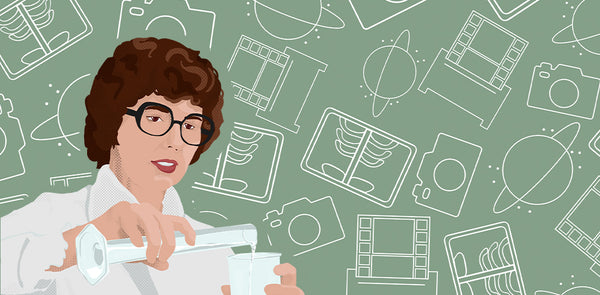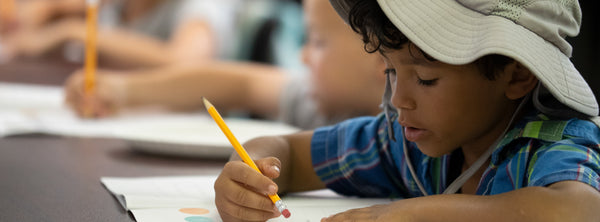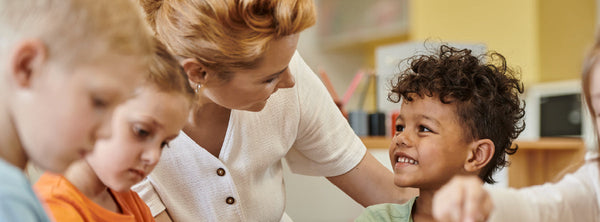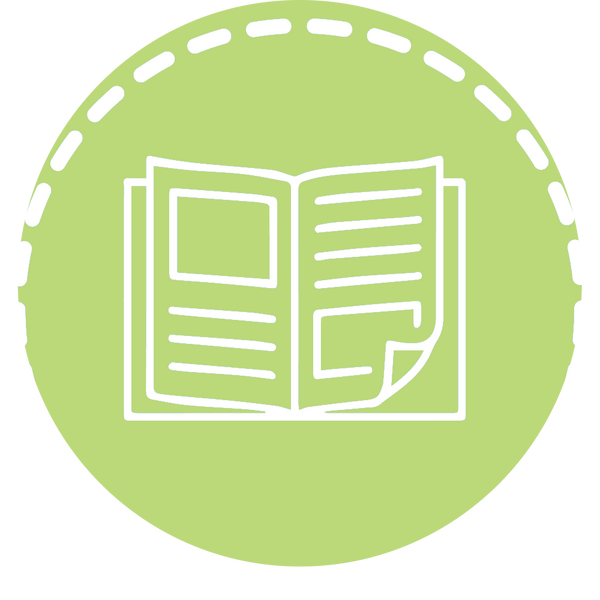
STEAM in History: Barbara Askins
For thousands of years, people have been searching for ways to see higher into the sky and deeper into space. Many advancements in photography had to be made long before telescopes like Hubble or Webb could send groundbreaking images back to Earth. One such contribution was made by a mother of two who started her career as a teacher. Read on to learn how chemist Barbara Askins revolutionized both space and medical imagery with her invention.

Who is Barbara Askins?
Born in Tennessee in 1939, Askins began her career as a teacher. She didn’t return to college to complete her bachelor’s and master’s in chemistry until after she’d married and had two children. In 1975, she accepted a position at NASA’s Marshall Space Flight Center as a chemist.
While working with NASA, she was presented with a problem to solve: how can the quality of photos taken from space be improved?
Using Chemistry to Improve Photo Quality:
At the time, photos were taken on film, which required several days to process into the final image. When taking a photo, the camera exposed grains of silver in the film to light. These exposed silver-halide grains were then turned into pure silver through a series of chemical baths, resulting in a negative. The negative was then used to expose a print, which was then developed again into the final photo.
When taking photos in space, this development process was completed by the space probe itself. Then, scientists would have to wait even longer for the photos to be sent back to Earth. Photos would either be dropped in a canister and caught by planes, or scanned by the space probe and sent back to NASA as a string of data. After completing this entire process, researchers could finally see how well the photos turned out.
Researchers at NASA were often disappointed to find that photos taken from space were underexposed and too low-quality to use. To solve this problem, Askins applied chemistry and radiology to find a way to improve the image quality.
In 1978, Askins patented the "Method of Obtaining Intensified Image from Developed Photographic Films and Plates." By turning the silver in a developed photo radioactive, she was able to create a second print of the image, called an autoradiograph. This autoradiograph reproduced the same image with improved density and contrast, bringing out details that were invisible before. Because this method could be applied to developed photos, even pictures that were decades old could be brought back to life.
Askins’ method was successful both at NASA and in other fields, such as medicine. X-ray imagery, in particular, was significantly improved. With the ability to enhance x-rays, patients could be exposed to less radiation and doctors could give better diagnoses.
Askins’ contribution earned her the title of Inventor of the Year in 1978. Throughout her tenure with NASA, she continued to contribute to research and serve as a role model and mentor to budding scientists.
Click for free printable posters and trading cards about Barbara Askins and more STEAM role models to share with your learners!
Exploring Solutions with STEAM:
Share Barbara Askins’ story with learners and get them problem-solving! Underexposed photos were a common problem in Askins’ time, but today, few people other than researchers and hobbyists use film photography. What’s a task your learners often complete in the classroom or at home that could be improved? Try brainstorming some common challenges, then choose one to look at from Science, Technology, Engineering, Arts and Math perspectives to think about solutions.
What STEAM role models have inspired you?
Let us know in the comments below!
Ready to Launch Your Own STEAMventure?

With fun activity books and STEAM role models centered around Hot Air Balloons, Airplanes, Helicopters and Rockets, BrickLAB STEAMventures enriches K-1 or 2-3 grade learning no matter the environment it’s introduced in!
With hands-on builds, problem-solving challenges, critical and creative thinking activities, arts connections and so much more, BrickLAB STEAMventures is your surefire way to give your youngest students a positive STEAM experience.
More STEAM Role-Models:
Click the links below to learn about more inspiring, diverse STEAM role models:
- Freebies: STEAM in History Posters & Trading Cards
- Blog: STEAM in History: Elizabeth Magie
- Videos: Drone Careers: Filmmaking & Cinematography
- Webinar & Posters: Girls in STEM and the Women who Inspire Them








